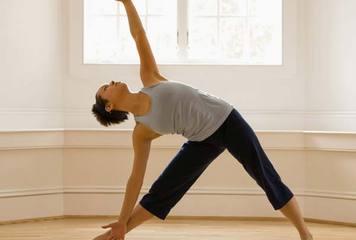
People have been proclaiming the numerous benefits of yoga for centuries. A few of the praises for this ancient discipline include greater flexibility and strength, improved levels of energy and sleep, along with a calmer, more contented mind. Everyone loves it because it is not just a powerful way to get fit physically; it is also an incredible way to feel more emotionally harmonious. It provides a holistic approach to dealing with the challenges of everyday life.
People are drawn to yoga nowadays for many reasons. Many people simply hope for increased physical fitness, or may be seeking relief for any specific physical condition. Others are seeking a method to manage stress. Yoga can also complement medical science and therapy for particular conditions such as depression and anxiety. Yoga has additionally become known as a easy way prepare for child birth. It will help less able-bodied people to add some muscle.
Yoga has long been known to be an excellent antidote to stress. Yoga combines many popular stress-reducing techniques, including exercise and understanding how to control the breath, clear the mind, and relax the body. As yoga becomes ever more popular, more and more people are discovering the benefits this ancient practice gives their stressful lives.
While hearing how yoga has enhanced a lot of people’s lives is sufficient of a reason to create this practice a part of your weekly or perhaps daily routine, a current scientific study has further validated the benefits which have been talked about for years.
How to De-Stress
Your central nervous system has several branches. One of these branches controls what your organs are doing, and it has two parts: the sympathetic, or “fight or flight” state, which ramps up when you’re stressed (and dumps cortisol to your bloodstream).
The parasympathetic, or “rest and digest” state, which controls more daily functions. So if we’re looking to get less stressed, we’ll have to harness that “rest and digest” state.
The only issue is these two states are happening automatically inside our bodies and we can’t control them.
However, yoga comes with an answer. The diaphragm, muscle that we use to breathe, mostly functions automatically, but we are able to also control our breathing whenever we want to (like holding our breath underwater). When we practice specific breathing patterns (called pranayama in yoga) we are able to slip ourselves into that “rest and digest” state and permit our minds and bodies to obtain some relief.
How Yoga Relieves Stress
Breath Control
Pranayama, or breath work, is an integral part of any yoga practice and something that translates well alive off the mat. At the minimum, yoga increases your understanding of the breath as a tool to relax the body. Although breathing is definitely an involuntary act (you need to keep doing it to remain alive), you can decide to regulate the breath. Just understanding how to take deep breaths and understanding that this can be a quick way to combat stressful situations is very effective.

How Yoga Relieves Stress
Relaxation
Each yoga sessions ends with 5 to 10 minutes spent using corpse pose – savasana. Although this enforced relaxation can be challenging at first, eventually it serves the objective of a total release for body and mind. Savasana transitions you into the world feeling refreshed and designed with the tools to combat stress in your life. Yoga nidra is a practice that provides an opportunity for a longer, deeper duration of relaxation and an summary of meditation, which can also be an excellent yoga for stress reducer.
Clearing your brain
Our minds are constantly active, racing in one thought to another, spinning possible scenarios for future years, dwelling on incidents in the past. All this mind jobs are tiring and stressful. Yoga offers several approaches for taming the monkey mind. The first is breath work, as outlined above. Each breath is tied inextricably to the current moment; you are not inhaling the past or the future, only right now. Focusing on each breathe in and out to the exclusion of other thoughts is an excellent method to clear the mind, It’s also a basic meditation technique. In addition, the performance of yoga poses, or asanas, also provides a form of meditation. The poses are extremely physical, and have to be completed with such concentration, that other thoughts and worries they fit to the side, giving your mind a much-needed break.
Exercise
Hatha yoga may be the physical practice of yoga postures. There are various types of hatha yoga: some are slow and much more focused on stretching, other medication is fast and more of the workout. If you are looking to alleviate stress, no one yoga style is superior, so select one that meets your level of physical fitness and personality. Any exercise can help relieve stress by keeping the body healthy and releasing endorphins, natural hormones which make you feel better. Yoga also relieves stress through stretching. When you’re stressed, tension is kept in the body making you feel tight and frequently causing pain. The brilliant stretching of yoga releases tension from trouble spots, including the hips and shoulders.
